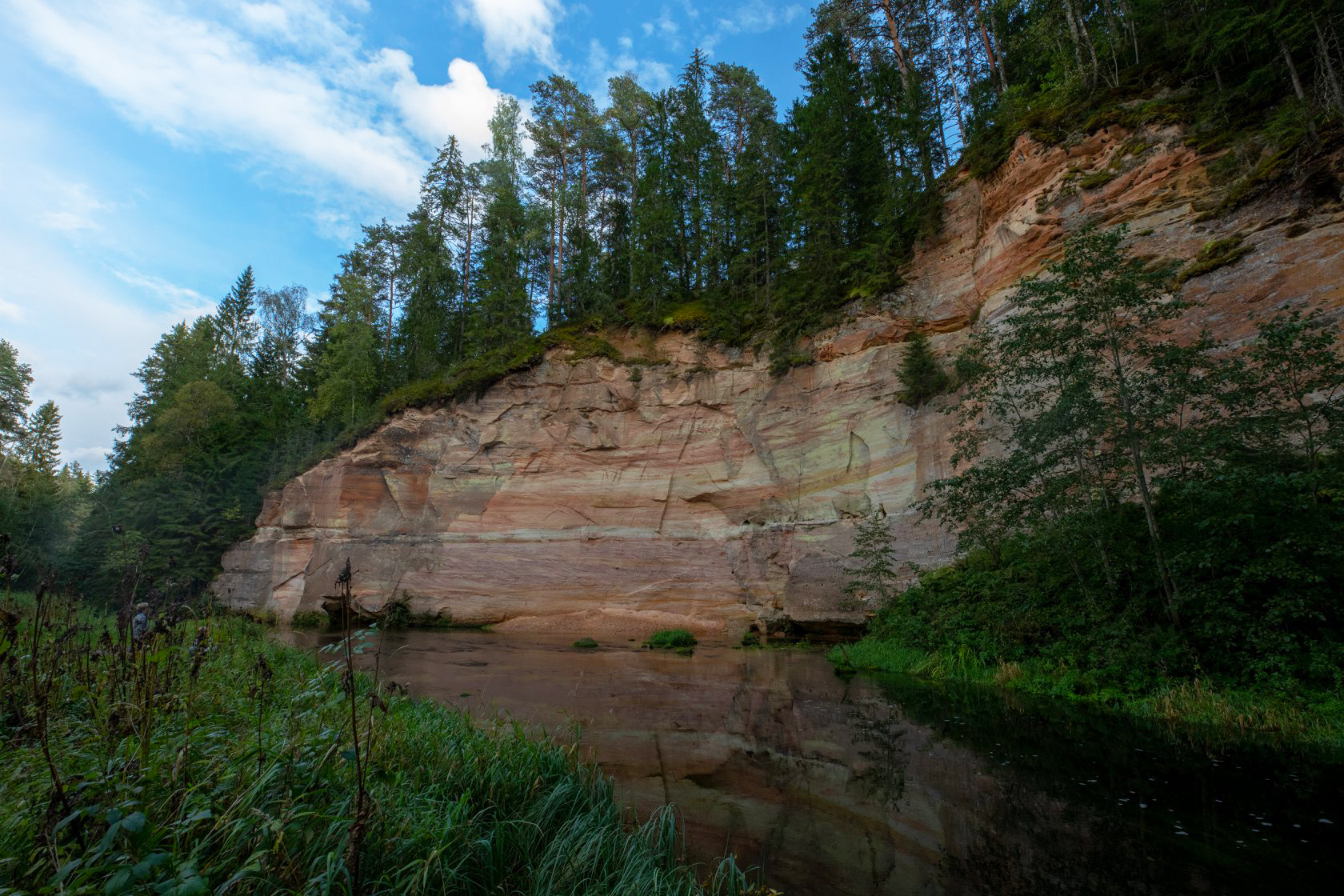The North Estonian Klint is a symbol of Estonia
Estonia is known for its geological sights. It could be said that the most beloved natural monuments are the North-Estonian Klint or North-Estonian limestone bank, the Taevaskoda with its Devonian sandstone cliffs, the erratic boulders, and the meteorite craters.

In addition, there are other significant geological sights, such as the Silurian klint in Saaremaa and Muhumaa, karst areas in Harju County, drumlins in Vooremaa, and Kõrvemaa with its scenic landscape.
North Estonian klint
The North Estonian Klint is the central section of the 1,200 km long Baltic Klint, covering approximately 300 km (up to 600 km along the terrace edge) in Northern Estonia between Osmussaar and Narva. The North Estonian Klint is located on the border of the Fennoscandian Shield and the East European Platform.
You can get the best sense ofthe magnitude of the North Estonian Klint in places where the cliff rises high above the sea. Examples of such places are the Ontika (up to 55 m above sea level), Türisalu (up to 30 m), Rannamõisa (up to 35 m), and Pakri (up to 25 m) cliffs. All these places are in landscape protection areas.
Read more about the North Estonian Klint here.
Erratic boulders
One of the most unique sights of the Estonian landscape are the erratic boulders, which can be found both alone and in large rock complexes.
The erratic boulders are large rocks with a circumference of more than three metres, which the continental glaciers have brought here from the north. There are almost 100 giant boulders in Estonia with a circumference of more than 25 metres. Our ancestors named them and they often appear in legends. Large erratic boulders are more often found on the northern coast and the islands of Western Estonia.
Today, giant boulders have been taken under nature conservation. The organisation of their protection began as early as in the nineteenth century. A complete overview of the large erratic boulders is provided by the book of Estonian primeval nature, which Herbert Viiding started compiling in the mid-1980s. The work was completed in 2001 and a large part of the book’s database can be found in the Estonian nature information system EELIS.
Taevaskoda cliffs in Põlva County
The steep banks of the winding Ahja River in Põlva County, the Taevaskoda cliffs, have been called the greatest sights of Estonian nature. These are one of the most visited natural objects in Estonia. The largest of them is Suur Taevaskoda: an almost 150 m long sandstone wall on the southwestern edge of a steep bend turning from south to east, which is 20 m high in the tallest part. The outcrops date back to the Devonian period 419–359 million years ago [1]. The exposed complex of intertwined sandstone layers of the Härma formation of the Burtnieki stage is picturesquely colourful. Yellowish, greyish, pinkish-white, and purplish-brown layers alternate in complex patterns [2]. Suur Taevaskoda is under nature conservation and is located in the middle of the Ahja River primeval valley landscape protection area, established in 1957.
Meteorite craters
We have an extraordinary number of meteorite craters, considering the small area of Estonia, and there is also great interest in searching for and studying them. For example, the study of the meteorite origin of Lake Kaali in Saare County began already in the early 1920s [3]. Kaali meteorite craters were protected as individual natural objects as early as in 1938 [4]. Lake Kaali in Saare County launched the quest for discovering meteorite craters both in Estonia and Europe. The craters formed during the impact explosions of the pieces of a giant meteorite that fell to Kaali roughly 2,800–3,500 years ago. Lake Kaali is a well-accessible and beloved tourist attraction. Today, the craters are protected by the Kaali landscape protection area.
Traces of meteorite impacts can also be seen elsewhere in Estonia. In addition to Kaali, there are crater groups visible in the landscape in Ilumetsa as well. In Kärdla, there is a hidden structure in the earth; individual craters are visible on the ground in Tsõõrikmäe and Simuna.
Last modified: 01.12.2021
__________________________________________________
[1] https://keskkonnaharidus.ee/sites/default/files/uploads/2015/06/Urgloodus-_looduse_isearasused.pdf
[2] A. Kleesment. Suur Taevaskoda. Eesti ürglooduse raamat. https://infoleht.keskkonnainfo.ee/default.aspx?state=4;68547593;est;eelisand;;&comp=objresult=yrg&obj_id=1041927054
[3] T. Viik. Kaali järve mõistatuse lahendamiseks kulus ligi poolteist sajandit. https://forte.delfi.ee/archive/kaali-jarve-moistatuse-lahendamiseks-kulus-ligi-poolteist-sajandit?id=84516339